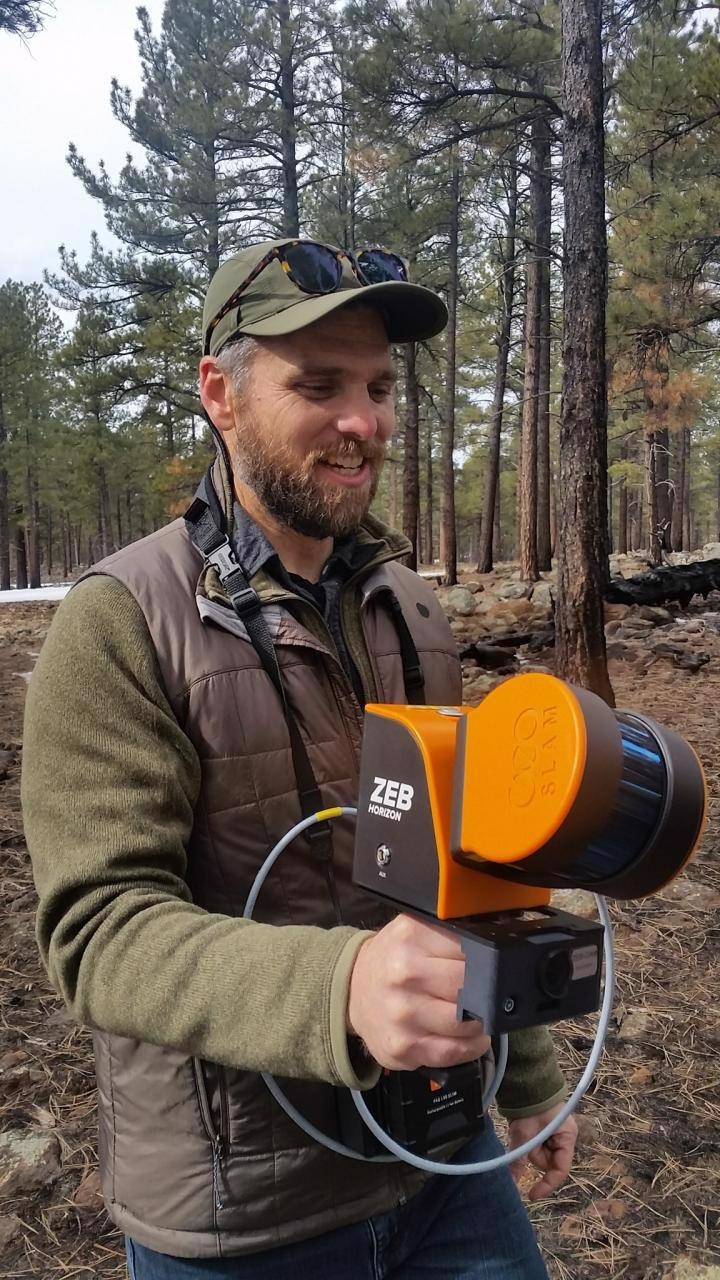Researchers working on forest ecology and ecological restoration have been employing state-of-the-art light detection and ranging (lidar) technology in extensive applications.
 Researcher Jon Donager uses a handheld mobile lidar scanning (MLS) device. Image Credit: Northern Arizona University.
Researcher Jon Donager uses a handheld mobile lidar scanning (MLS) device. Image Credit: Northern Arizona University.
We needed an accounting of relative accuracy and errors among lidar platforms within a range of forest types and structural configurations.
Andrew Sánchez Meador, Associate Professor and Executive Director, Ecological Restoration Institute, Northern Arizona University
The research was headed by Sánchez Meador and the findings were published in the Remote Sensing journal in an article titled “Adjudicating Perspectives on Forest Structure: How Do Airborne, Terrestrial, and Mobile Lidar-Derived Estimates Compare?”
The research compared vegetation attributes at different scales originating from fixed-location terrestrial (TLS), piloted airborne (ALS), and mobile lidar scanning (MLS) to analyze how the tools could be employed for providing elaborate details on forest structure and composition.
The group, which includes postdoctoral scholar Jonathon Donager and PhD student Ryan Blackburn, both from ERI and NAU’s School of Forestry, discovered that MLS steadily delivered accurate structural metrics and is capable of producing accurate estimates of landscape metrics and canopy cover.
Our findings suggest that MLS has great potential for monitoring a variety of forest attributes. These types of scanners cost a fraction of that of other platforms, work equally well indoors and outdoors, are easily deployed, and view the forest the same way humans do—from down among the trees—which makes communicating research findings easier.
Andrew Sánchez Meador, Associate Professor and Executive Director, Ecological Restoration Institute, Northern Arizona University
“As the technology develops further and prices continue to come down. We expect to see more researchers and managers using these tools for all sorts of applications, from monitoring the effects disturbance events such as fire and flood to quantifying vital wildlife habitat, to providing baseline data for virtual reality applications and simulation modeling,” added Sánchez Meador.
Through this study, Sánchez Meador and David Huffman, ERI director of research and development, obtained financial support from the Phoenix-based Salt River Project (SRP) to investigate the capability of MLS in quickly assessing forest structural conditions in mixed-conifer forests and to assess the distribution and amount of coarse woody debris, the crucial element of forest ecosystems.
The study has been supported by the NAU’s Research Equipment Acquisition Program (REAP), which allowed ERI to purchase a handheld MLS device. The study also demonstrates the beneficial aspects of investments in equipment and technology through the REAP program. Furthermore, the research could leverage support for wide-scale, multiple studies while promoting tie-ups with companies such as SRP.
Sánchez Meador, ERI’s executive director, strives to extend the institute’s attention to the restoration of western forest landscapes by employing novel technologies. Attention will also be paid to service to Native American tribes, by advancing new proposals for the use of wood products and tree biomass along with actively engaging with the people and communities that impact land management and rely on these forests.
Journal Reference:
Donager, J. J., et al., (2021) Adjudicating Perspectives on Forest Structure: How Do Airborne, Terrestrial, and Mobile Lidar-Derived Estimates Compare? Remote Sensing. doi.org/10.3390/rs13122297.